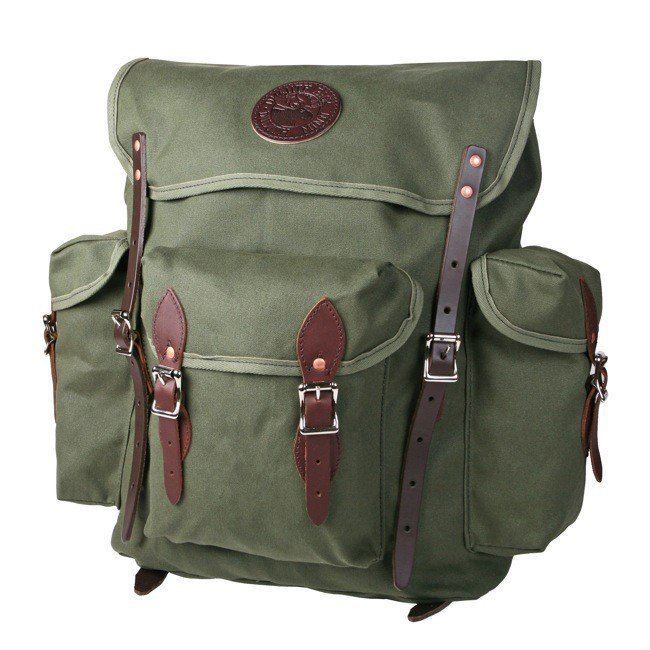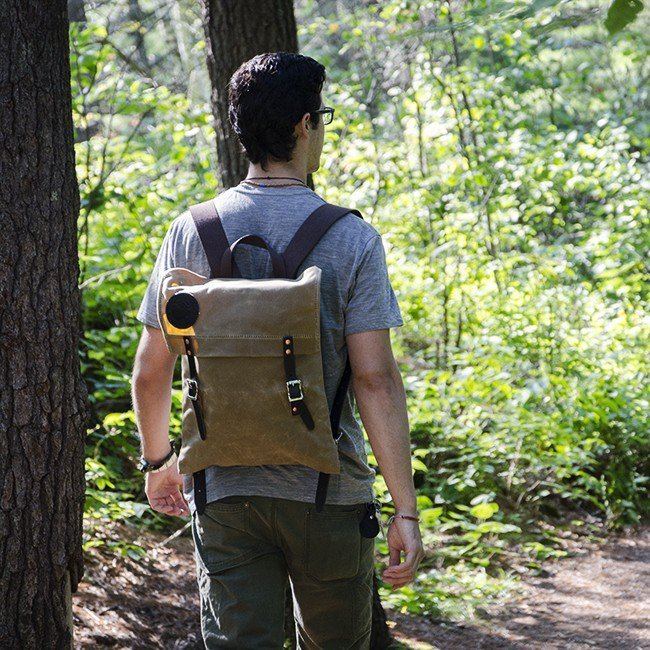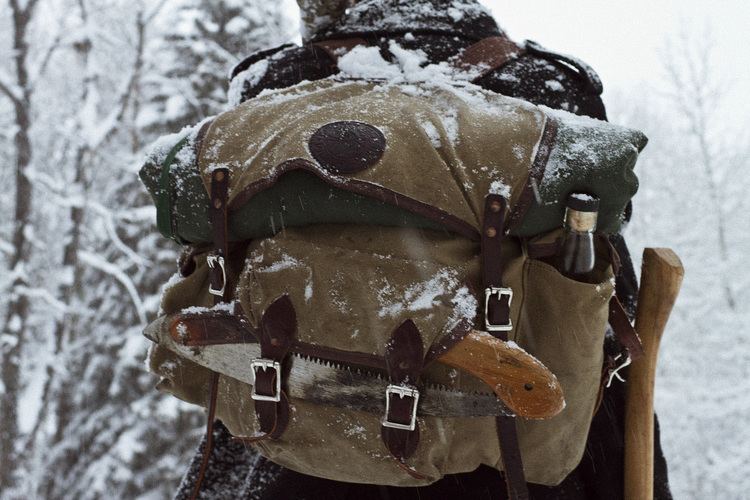Duluth pack behind the scenes
A Duluth pack is traditional portage pack used in canoe travel, particularly in the Boundary Waters region of northern Minnesota and the Quetico Provincial Park of Ontario. A specialized type of backpack, Duluth packs are made of heavy canvas and leather or cordura nylon, and are nearly square in order to fit easily in the bottom of a canoe.
Contents

Duluth pack scout pack
Description

A Duluth pack is a specialized type of backpack made of heavy canvas and leather or cordura nylon. The packs are a traditional portage pack which are nearly square in order to fit easily in the bottom of a canoe.

These packs are portaged, along with the canoe, between lakes on wilderness canoe trips. The typical Duluth pack consists of a single large envelope which is closed by straps and roller buckles rather than a zipper. The largest numbered standard (#4) have a "set-out" and so is shaped as a box rather than as an envelope. The pack is carried by two shoulder straps, and sometimes a tumpline worn over the top of the head. They are made in several sizes, traditionally referred to by numbers (such as #2, #3, and #4). #2 is the smallest commonly numbered size; #4 is the largest, with approximately 8,000 cubic inches of interior storage.

Their key attributes make them well adapted to wilderness canoe camping where travel is largely by water (where the packs and gear do not need to be carried) punctuated by portages where the packs and gear need to be carried over land:

Conversely, they lack many features and attributes of long distance backpacking type backpacks, and so are generally not used for such. The rugged canvas and leather style of Duluth packs has become fashionable, and other products (e.g. purses, computer cases, smaller packs) are now produced and offered in this same style.
History
The Duluth Pack is named after the city of Duluth, Minnesota, where they were invented.
The Duluth pack has its roots in a French-Canadian named Camille Poirier, who made his way west to Duluth, Minnesota. Arriving in 1870 with his "little stock of leather and tools", he began a small shoe store and quickly made a go of it in this booming frontier town on the shores of Lake Superior. Out of his small shoe shop on the waterfront, Camille began building a new style canoe pack with a tumpline, sternum strap, and umbrella holder. Patented by Mr. Poirer in 1882, the original #3 Duluth Packs have changed little since they were first introduced.
In 1911, Camille sold off the canoe pack business to Duluth Tent and Awning on West Superior Street in Duluth, MN. Headquartered at this location for the last 100 years, and now known as Duluth Pack. In the 1920s as America began its love affair with the automobile, so Duluth Pack built "auto packs" that would clamp to the running boards of the car to hold extra gear. Auto camping was becoming all the rage and Duluth Pack was helping to build the forerunner to the first RV in America.
